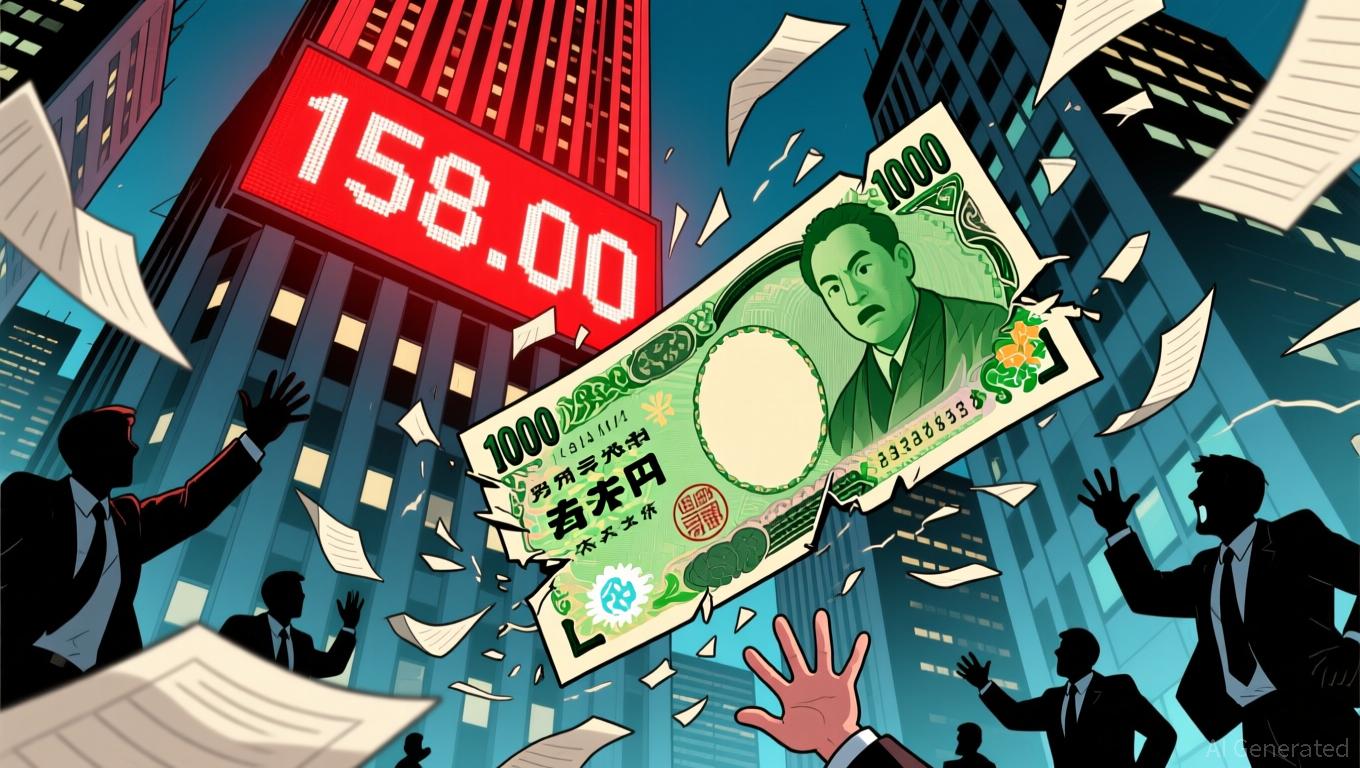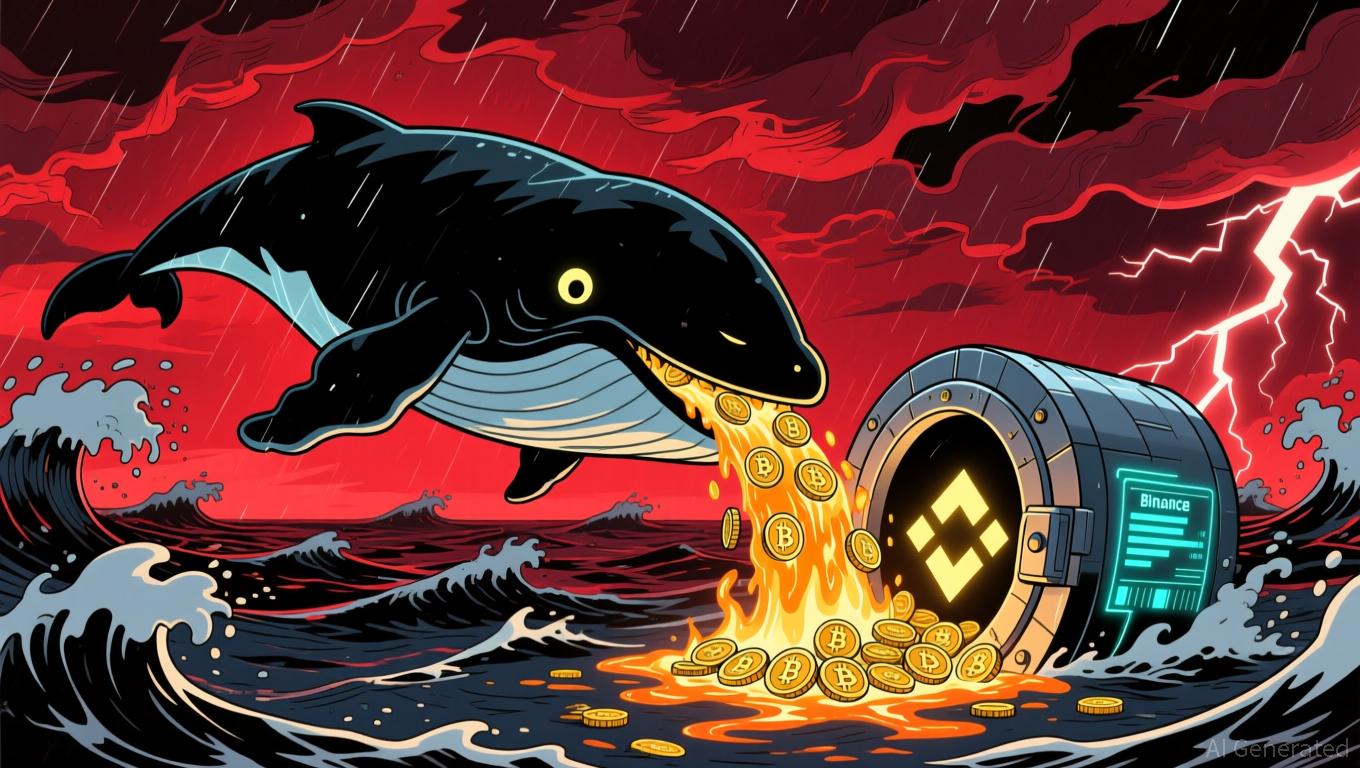Policy Showdown: Yen’s Decline Challenges Japan’s Economic Unity
- Japan's yen plunges to 10-month lows as dovish BoJ policies and fiscal stimulus clash with U.S. rate differentials. - Governor Ueda emphasizes data-driven decisions while Finance Minister Katayama warns of "disorderly" market intervention risks. - 21.3-trillion-yen stimulus package raises inflation to 3.0%, deepening policy tensions between fiscal expansion and monetary restraint. - Fed's delayed rate cuts and geopolitical factors like China's tourism decline compound yen's vulnerability to speculative s
The Japanese yen has dropped to precarious lows, fueling intense speculation over whether the Bank of Japan (BoJ) or the Ministry of Finance will step in to halt its slide. As the USD/JPY pair challenges the 158.00 resistance, dovish policy stances and persistent inflation have intensified
BoJ Governor Kazuo Ueda has reiterated that policy moves will

The government’s aggressive fiscal stance has come under the microscope,
The yen’s rapid fall has led Japanese authorities to issue verbal warnings. Katayama made it clear that
Traders are watching closely for any signs of official intervention,
The U.S. dollar’s resilience, supported by fading hopes for Federal Reserve rate cuts, has added to the yen’s troubles.
At the same time, geopolitical strains—such as China’s reduction in tourism to Japan after Takaichi’s remarks on Taiwan—have further weighed on the yen by reducing export demand. These developments highlight the complex relationship between domestic policy decisions and external shocks, making the BoJ’s pursuit of stable inflation and currency values even more challenging.
With USD/JPY nearing key technical thresholds, the BoJ and Japanese government are facing a crucial test of their ability to coordinate policy. While verbal interventions have offered short-term relief, lasting stability for the yen may require decisive steps—whether through rate increases, fiscal adjustments, or direct market action. Investors remain cautious, as the outcome will likely influence not only Japan’s economic direction but also the broader global currency landscape.
Disclaimer: The content of this article solely reflects the author's opinion and does not represent the platform in any capacity. This article is not intended to serve as a reference for making investment decisions.
You may also like
Bitcoin News Update: Bitcoin ETFs See $1.3B Outflow While Institutional Investors Enter the Market
- Bitcoin fell below $90K after erasing 2025 gains, with U.S. spot ETFs recording $1.32B in outflows as BlackRock's IBIT lost $532M. - Institutional buyers like El Salvador and MicroStrategy added $100M+ in BTC, contrasting with ETF redemptions and bearish options activity. - Regulatory uncertainty and technical indicators suggest prolonged volatility, with key support levels at $89.4K and $82.4K under pressure. - Binance's Teng called the 21% November drop part of healthy consolidation, while Dimensional

Bitcoin News Update: Typical Bitcoin Holder Now Sees 13% Decline as Price Drops Under $84k
- Bitcoin fell below $84,000 on Nov 20, 2025, a 32% drop from its October peak of $126,300, marking its largest correction since late April. - Macroeconomic pressures including stubborn inflation, weak jobs data, and ETF outflows exacerbated selloffs, with leveraged liquidations exceeding $1.3B. - Technical indicators show broken key support levels and a "death cross," while institutional buyers like Strategy added $835M BTC to stabilize prices. - The $83,500–$85,000 range is critical for near-term directi

Bitcoin News Update: Bitcoin's Drop Intensifies as Major Holder's Deposit Unable to Halt Crypto Market Downturn
- Bitcoin plunged 4.53% on Nov 21 as a 665.9 BTC whale deposit into Binance failed to halt a $120B crypto market crash. - Prices fell to $81,629 amid weak U.S. jobs data, fading macro optimism, and $3.9B in leveraged position liquidations across 24 hours. - Bitcoin ETFs saw $903M outflows while perpetual futures open interest dropped 35%, signaling institutional retreat from crypto. - Analysts warn of forced selling from leveraged holders like MicroStrategy as Bitcoin's $75K support level appears increasin

Bitcoin News Today: Crypto at a Turning Point: ETF Withdrawals and Federal Reserve Announcements Trigger Bitcoin's Sharpest Drop Since 2022
- Bitcoin fell to $95,000 in Nov 2025, its worst monthly drop since 2022, driven by ETF outflows, shifting Fed signals, and waning investor sentiment. - $1.32B in Bitcoin ETF outflows and $728M Ethereum losses reflect profit-taking after October's rally, with institutional players like MicroStrategy seeing share declines. - Fed officials remain divided on rate cuts, with liquidity risks highlighted by Bank of America as Bitcoin's 35% peak-to-trough drop signals market distress. - Crypto Fear & Greed Index
